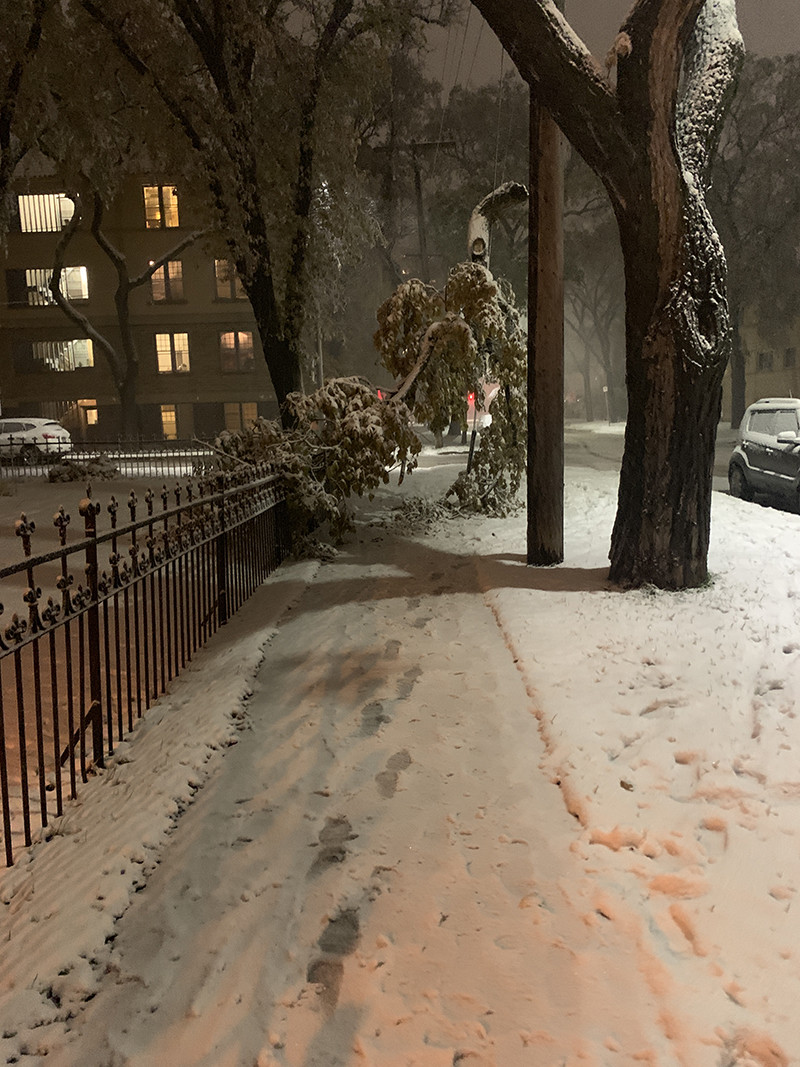City Roots
Lean on trees
Over the past few months, this column has made a case for a closer look at Winnipeggers’ relationship with trees, both past and present. I have been able to consider what they do for humans, as well as their own agency, and to think about how they became so central to Winnipeg’s identity as a city.
Indeed, the canopy remains important to Winnipeggers. In September of last year, Mayor Brian Bowman launched the Million Tree Challenge, with the aim to plant one million trees in the city within the next 20 years. This initiative was created in response to threats posed by invasive species and diseases, like the emerald ash borer and Dutch elm disease, that have already done significant damage to the city’s canopy. By February of this year, the challenge had already raised $1.25 million in donations.
Winnipeggers mobilize regularly in support of trees. Recent examples include the Save Our Canopy campaign and the Trees Please Coalition, both asking the city to increase the forestry budget for 2020. Another organization called Trees Winnipeg has been around since 1992, working to help Winnipeggers manage threats to the city’s trees, encouraging species diversity and designating heritage trees.
Photo by Talia Steele
Our city is clearly full of tree lovers. Because of this, many people will remember the October storm of 2019 for many years.
A month after the Million Tree Challenge started, a winter storm swept over Winnipeg, catching everyone off guard. Unprepared for the wet and heavy snow that coated their leaves, many trees were damaged or completely downed. In the cleanup that followed, arborists cleared around 1,700 tonnes of trees and branches. The city declared a state of emergency, and crews from all over the country were flown in to help clear the debris.
During the storm, my social media feeds were full of people worrying about trees. Many were afraid of the potential damage the trees could do to their property or power lines, but there was also incredible distress expressed about the trees’ well-being. Afterwards, a friend of mine even suggested holding a citywide event to mourn the trees destroyed by the snow. I wish someone had taken up this idea.
That October, many of us felt powerless to help the city’s trees. Today, many of us feel a different kind of helplessness. We are faced with a virus that has made its way across our interconnected world, and the best we can do is slow it down.
Trees can be an emotional balm for us in this moment, as they have so often before. In a time where we are looking at being more confined and isolated than most of us can ever remember, we can look to trees for comfort where possible.
We can enjoy their company on walks while we practice social distancing, looking forward to fresh new leaves in spring and the dappled sunlight across the sidewalks in the summer. I know I will be looking to trees often for the solace they have given me so many times before. And I hope you can find comfort in their presence as well.
Kathryn Boschmann is a doctoral student in the history department at Concordia University whose research focuses on the relationship between religious communities and Indigenous activism in Winnipeg. She was born and raised in Manitoba and has made Winnipeg her home.
Published in Volume 74, Number 24 of The Uniter (April 2, 2020)






